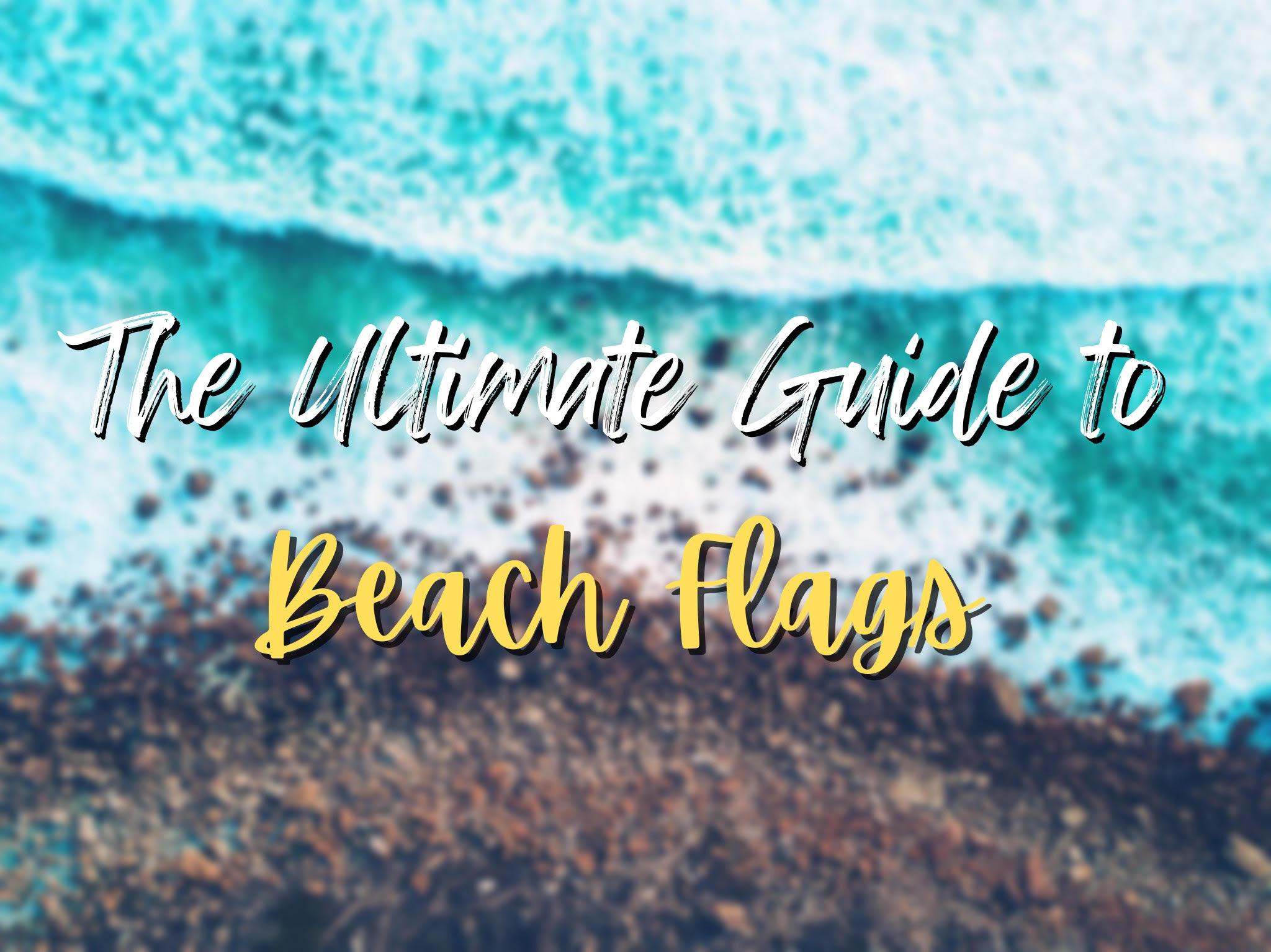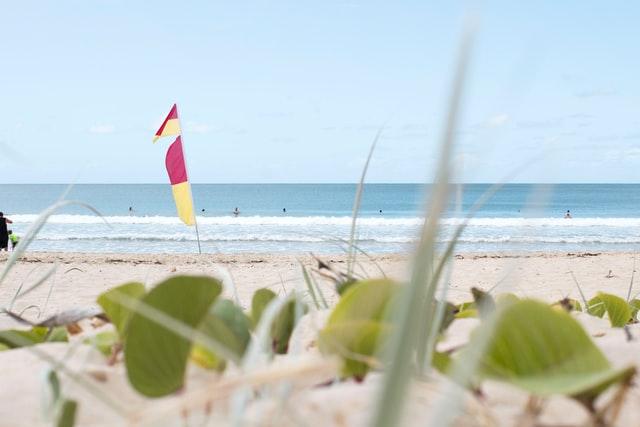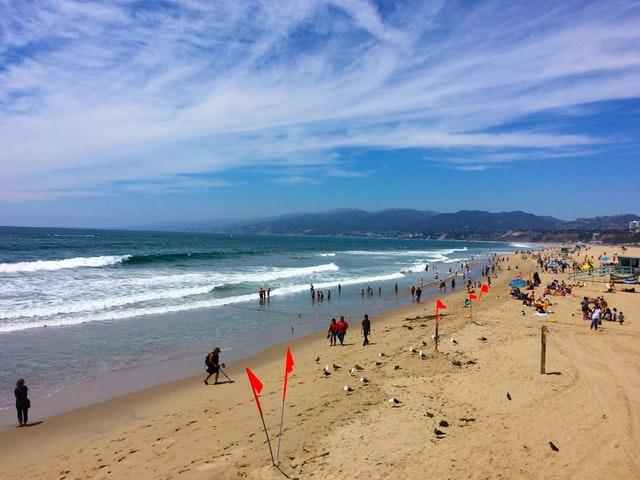The Ultimate Guide to Beach Flags: Staying Safe at the Beach
While beaches are all about swimming, riding the waves, and getting a good sun tan, it’s very important to be aware of beach flags. These beach safety signs are typically located at the entrance of the beach for local information.
Of course, knowing how to stay safe and to stay hydrated is very important. Every public beach has beach color flags to help you and your family stay safe while in the water.

Beach Flag Meanings
The meaning of flags on the beach are vital when you are at the beach, even if you never touch your toes in the water. You can find them outside often near the lifeguard towers. They should only be used for waters that are normally designated for any kind of aquatic activity. Here are 8 types of flags that you need to have knowledge of to help you stay safe while swimming out in the water:
The Yellow Flag
Medium Hazard - Moderate surf and/or rip currents are present. This flag indicates that the water conditions are rough but not life-threatening. When there is a yellow flag, it is recommended that you stay near or in view of the lifeguard and just be aware of the currents you are in.
Some beaches have permanent yellow flags as there may be some drop-offs or a higher population of bait fish. This is used as a safety caution for all swimmers. Think twice, remain extra cautious, and be aware of your surroundings.
The Red Flag
High Hazard - Rough conditions such as strong surf and/or currents are present. This means the surf is high and/or dangerous currents. You are still able to still but preferably if you’re a strong swimmer and you use extreme caution while in the water. This flag can also alert all beachgoers as a warning that a shark has recently been seen or has higher shark activity than normal.
The Red Over Red Flag
Water is closed to public use. The condition is too dangerous for even strong swimmers, so they have the water temporarily closed until further notice.
The Purple Flag
Jellyfish, stingrays, and other marine pests are present in the water. This flag will either fly on its own or with others as well, depending on the current conditions. The water is still open for swimming, but you just need to remain cautious of potentially dangerous marine animals. It is important that you shuffle your feet carefully while wading.
The Red Over Yellow Flag
(Halved red over yellow) Recommended swimming area with lifeguard supervision. To indicate that a specific area is being patrolled by qualified lifeguards and is safe to swim.
The Quartered Flag
This flag is usually with two white and two black squares. Meaning watercraft area - non-powered watercraft such as surfboards and even windsurfing are allowed in this area, and it is likely not safe to swim.
The Black Ball Flag
Watercraft use is prohibited, which is a yellow flag with a central black ball in the middle. No use of surfboards or other watercraft are allowed in the water when this flag is flying.
The Orange Windsock Flag
Offshore winds are present, and inflatables should not be used. This flag is in the shape of a con and may be triangular.

More Information About Beach Flags
Public beaches using the flag warning system must adhere to the state’s uniform warning flag program. These safety flags were mandated by the United States Lifesaving Association and the International Life Saving Federation in 2002. In 2005, the standardization of beach warning flags became required to help reduce any incidences of death and/or injury of any kind in the aquatic environment.
While there are multiple national and regional variations, the majority of the signs are pretty universal. Remember, the absence of any flag does not mean it is safe to get into the water.
Additionally, if you’re taking your kids out in the water or anyone who isn’t a strong swimmer is advised to wear life vests while swimming. It’s highly important to always supervise children and young adults and always be swimming with at least one adult. The National Weather Service uses wind direction, wind speed, and tidal ranges to determine the rip current risk. As well as collaborating with beach safety officers and lifeguards each day on the surf conditions.
What are the Most Common Flags that you will see at the Beach?
The yellow flag on the beach and the red flag at the beach are the ones you will see almost daily. There is a big reason behind each beach flag–helping you stay safe.
The standard size of these warning flags is 29.25 inches tall and 39 inches wide. Conditions are monitored throughout the day. Knowing the meaning of each of these flags will help you and your family stay safe in and around the water. If you’re a beachgoer and you have seen that a green flag is hoisted, then be sure to take advantage of the calm waters!
What about Currents?
As you swim, stay at least 100 feet away from piers and watercraft, as they may have good waves, but they can cause serious currents surrounding them. Typically forming in any low spots or breaks in sandbars and can occur at any beach.
But if you happen to get caught up in one, always swim parallel and not directly inwards. Otherwise, you’ll get pulled in further, especially if you’re not confident or you’re getting tired.
If you find yourself stuck in a current, remain calm, as it’s extremely important not to panic and continue to breathe. Try to keep afloat as best as possible, keeping your head above the water, and don’t exhaust yourself by fighting against the current. You can always raise your hand to alert the lifeguard or nearby beachgoers if there isn’t a lifeguard at the beach.
If you’re ever in doubt, don’t hesitate to stay on shore and enjoy the view with your toes in the sand until the water is calmer. If you are unsure if another person is struggling, you can always alert and ask a lifeguard. They’ll be happy to assist, and you could potentially help save someone’s life.
It’s important for you to be able to identify a rip current, sometimes incorrectly called a rip tide. They can move perpendicular to the shore and are often very strong. You will notice the water is deeper and/or darker, with fewer breaking waves, and the water is often sandy colored further beyond the surf zone. There may be some debris or seaweed among the significant water movement. Other than watching for the red beach flag, a simple trick is to just watch for the patterns of the waves breaking and/or gaps.

General Beach Safety Tips
Here are some other beach safety tips before dipping your toes in the ocean. All beachgoers are encouraged to use water-resistant sunscreen of SPF 30 or greater and to stay hydrated to help prevent dehydration. Avoid any other overexposure to the sun by bringing sunglasses, hats, cover-ups, and even an umbrella to create shade while you are enjoying the ocean view.
Always be with a buddy and never swim alone. If you do happen to get a sunburn, or maybe you prefer to call it, sunkissed. Take a cold shower or apply a cold compress to the area. Also, apply aloe vera gel or moisturizer gently, as this can help relieve the pain as well. Help keep your children safe at the beach by having them in bright swimming suits and/or vibrant clothing so they are easy to see and decide on a spot for them to meet in case you get separated from them. A place that is easy to spot, for example, the lifeguard tower.
Follow all beach rules and regulations, stay alert, and keep within your swimming capabilities. Avoid drinking alcohol before or at the beach as it’s a dangerous combination to mix with swimming. Listen for any announcements lifeguard(s) may make over a loudspeaker.
Obey the flags posted at the lifeguard tower, as they are there to tell us precious information about the beach, the surf, and any marine creatures near. This applies when you’re toes deep in the sand or enjoying the wonders of being in the ocean. If you are unable to find them or see them, you can ask the lifeguard where they are located or if you have any other questions. Being aware of the weather ahead of time, like the temperature of the ocean, is recommended before planning your beach day.
Above All Else, Enjoy the Ocean!
Overall, although the ocean can be a scary place, you can still enjoy a day at the beach. Just remember to respect the power of the ocean and be mindful of others while you’re swimming, wading, or building the biggest sand castle.
Enjoy the true beautiful wonders of the ocean, especially when it’s a calm sunny day. There’s nothing like relaxing to the sound of the waves crashing on the shore as you read your favorite book. Or even the laughter from you and your family as you swim in the refreshing water.
Link/Reference This Article
If you found the information in this article useful in your research, please link to use as the source using the tool below.
-
<a href="http://seatemperatures.net/blog/beach-flags/">The Ultimate Guide to Beach Flags: Staying Safe at the Beach</a>
-
"The Ultimate Guide to Beach Flags: Staying Safe at the Beach". SeaTemperatures.net. Accessed on April 18, 2024. http://seatemperatures.net/blog/beach-flags/.
-
"The Ultimate Guide to Beach Flags: Staying Safe at the Beach". SeaTemperatures.net, http://seatemperatures.net/blog/beach-flags/. Accessed 18 April, 2024
-
The Ultimate Guide to Beach Flags: Staying Safe at the Beach. SeaTemperatures.net. Retrieved from http://seatemperatures.net/blog/beach-flags/.